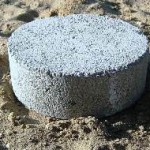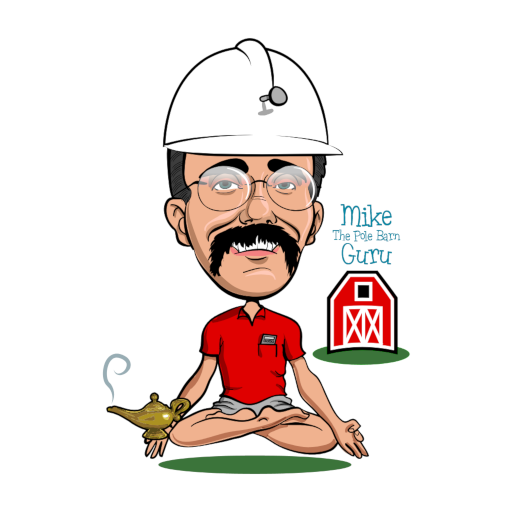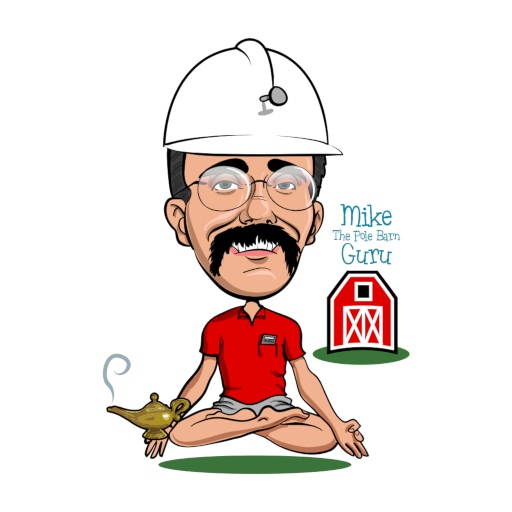Reader KEN in FORT COLLINS writes:
“HI MIKE!
 We just bought an acreage with an existing 36 x 48 post frame farm storage building. In talking to the prior owner, we have learned that the builder did not use cookies, footing pads or a cement bottom collar. So nothing to prevent settling (He did nail uplift cleats on each column. ) We are concerned about the building settling. The building is two years old and is straight and level now.
We just bought an acreage with an existing 36 x 48 post frame farm storage building. In talking to the prior owner, we have learned that the builder did not use cookies, footing pads or a cement bottom collar. So nothing to prevent settling (He did nail uplift cleats on each column. ) We are concerned about the building settling. The building is two years old and is straight and level now.
Question: Our question is if we pour a five inch thick concrete floor and install hairpin rebars in each column will this provide significant protection against settling? If not what remedy would you suggest? Your sage advice would be appreciated!”
Amazing.
I say this because Larimer County requires building permits on all post frame buildings and they are good about doing inspections. How this one escaped their watchful eye is beyond me – and sad, because now you (new to you building owner who cares) are stuck trying to solve a challenge which never should have existed.
Which leads me to – you might want to contact the county to confirm a Building Permit was issued for your post frame building and it was signed off on by the field inspectors. If it wasn’t and your building fails a smart insurance company will get out of paying a claim to replace it. You may also have some recourse against the prior owner for not disclosing the building did not have a permit.
Builders like this give our industry a bad name and me headaches.
Tying the columns into a concrete slab on grade with rebar hairpins might prevent both settling and uplift forces. It might also just crack your concrete.
The best solution, in my humble opinion, is not the easiest one, which would be to excavate each column individually to eight inches below the column while supporting the building nearby. Slide an 18 inch or taller piece of sonotube up from the bottom of the column (unless you have some overly heavy roof load, loft or bonus room in the trusses 24 inch diameter should work on sidewalls, 18 on ends), place it on undisturbed soil, with the column in the center and pour the tube full of premix concrete. The soil should then be compacted around the tube and the upper portion of the excavation.
Mike the Pole Barn Guru

 One of our clients had been discussing with Hansen Pole Buildings Designer Lily a pole building to be located in rural Larimer County. The county had provided him with a sheet of “prescriptive” requirements for non-commercial, non-residential pole barns in the county.
One of our clients had been discussing with Hansen Pole Buildings Designer Lily a pole building to be located in rural Larimer County. The county had provided him with a sheet of “prescriptive” requirements for non-commercial, non-residential pole barns in the county.





